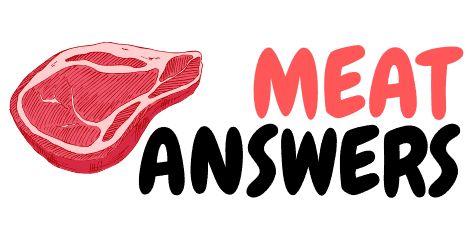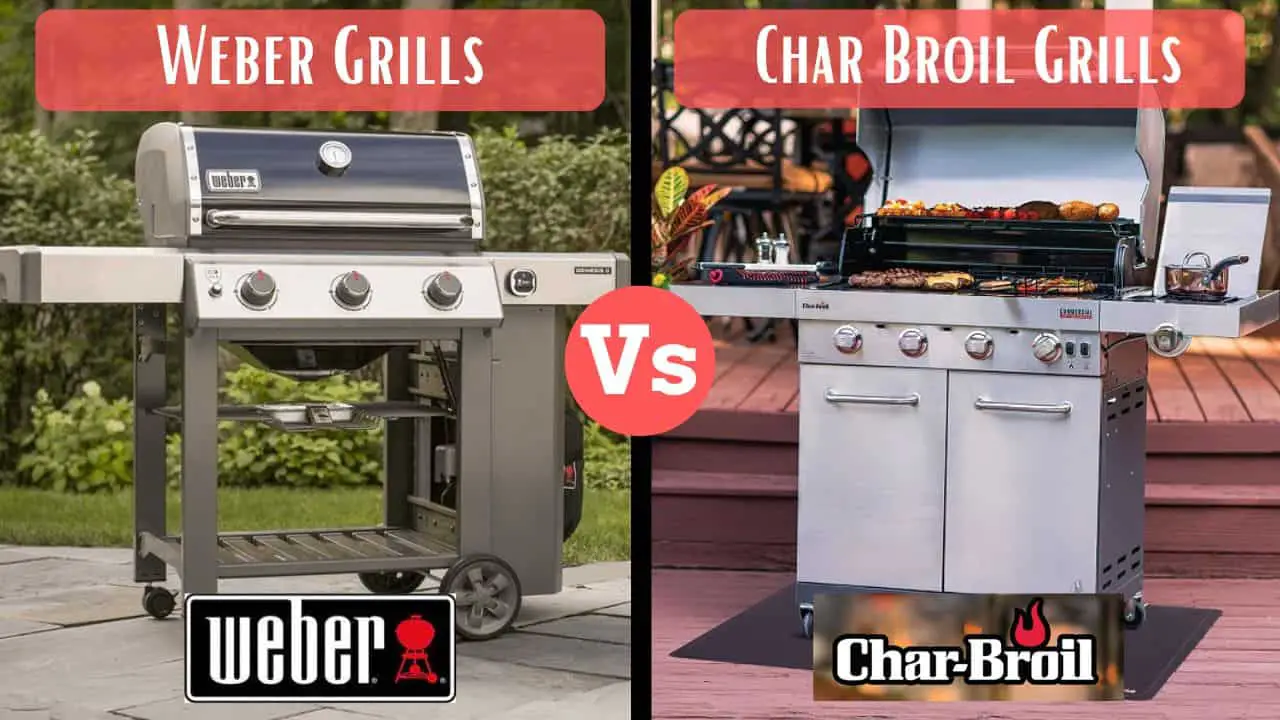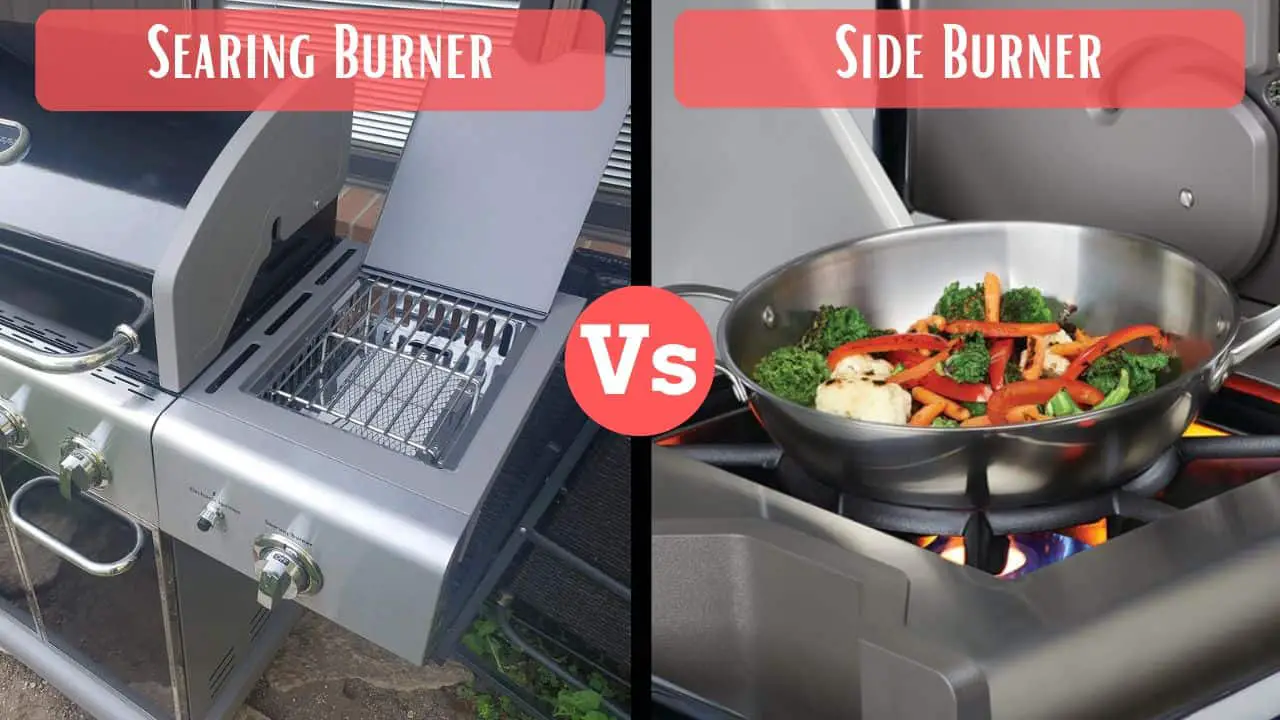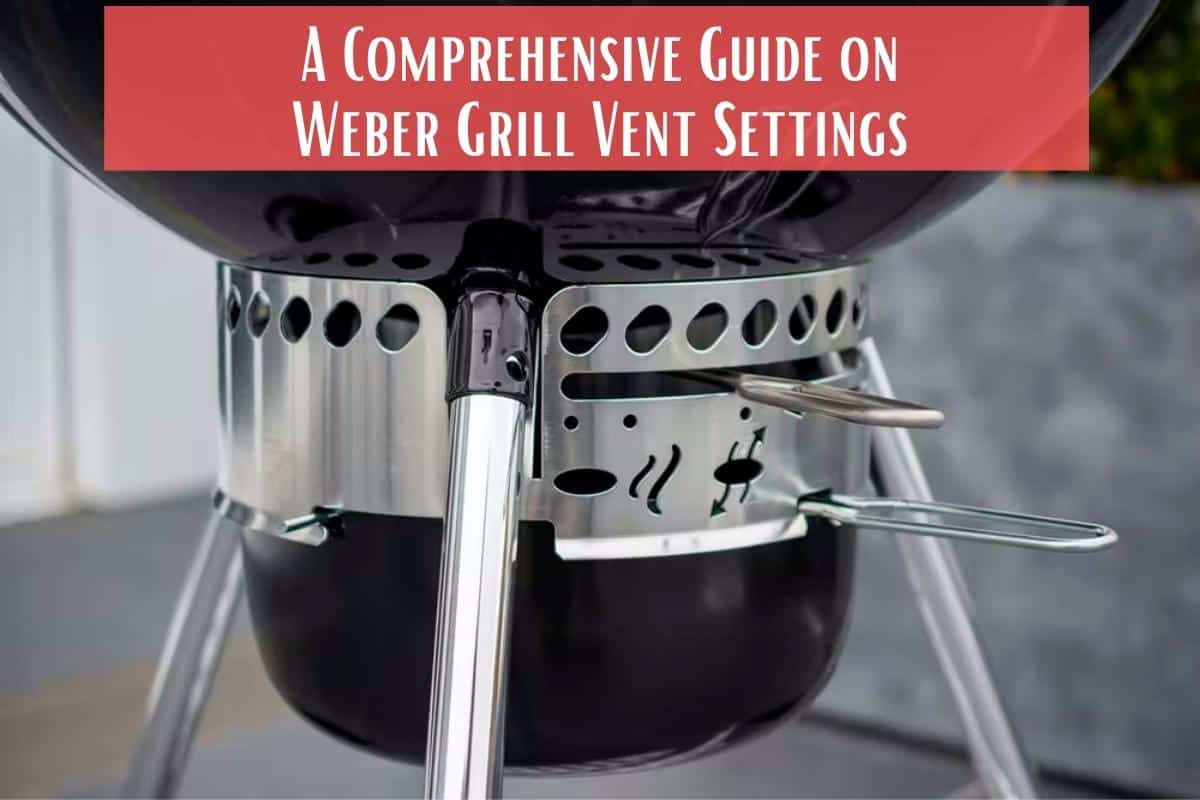Even as an avid griller, I’m always overwhelmed about how much charcoal to use in a Weber grill.
The amount of charcoal to add to a Weber grill can be a bit tricky because you don’t want to add to much as waste charcoal but also can’t add less as you won’t be able to reach the right heat temperature.

The short answer to how much charcoal to use in a Weber charcoal grill mostly depends on the size of the grill. Smaller or portable Weber grills require roughly 30 briquettes, and larger grills like Weber Kettleman grills require 50 to 75 briquettes.
Table of Contents
- 1 How Much Charcoal to Use in a Weber Grill?
- 2 What Type of Charcoal is Best for Weber Grills?
- 3 Best Lump Charcoal for Weber Grills
- 4 Can You Use Too Much Charcoal in a Charcoal Grill?
- 5 Does More Charcoal Mean More Temperature on a Charcoal Grill?
- 6 Can You use Wood Instead of Charcoal on a Weber Charcoal Grill?
- 7 How Many Charcoal Briquettes is Needed for 350 Degrees?
- 8 How Much Charcoal Do I Need for 200 Degrees?
How Much Charcoal to Use in a Weber Grill?
Charcoal Usage Requirement
When using a charcoal grill, there is a single most important thumb rule with regards to the amount of charcoal to use—the more coal you use, the hotter the fire!
Additionally, you’ll need to add more charcoal to your Weber charcoal grill on cold, windy, or rainy days to maintain a consistent temperature.
However, there are certain foods that are best cooked over moderate heat like burgers, hot dogs, and brats, so you don’t need very much charcoal but 4.5 lbs should do the trick. For foods that require moderate heat, adding a single layer of charcoal across the bottom of the grill should suffice, about 2.5 lbs.
Contrarily, if you’re searing steak or other types of meat, you’ll require a much hotter fire, which you can achieve by stacking the charcoal across the bottom of the grill at least two to three rows high, rough 6 – 7 lbs.
Speaking of heat, there are two factors that help control the temperature inside a charcoal grill—the amount of charcoal you use, and how much is available for the charcoal.
Weber Charcoal Grill Charcoal Requirement
| Grill Model | Grilling Type | Grilling Quantity | Charcoal Required | Temperature Achieved |
| 70th Kettle | Burgers/Steaks | 6 burgers, 4 medium steaks | 4-5 lbs/6 lbs | 450°F to 550°F |
| Master-Touch | Burgers/Steaks | 6 burgers, 4 medium steaks | 4-5 lbs/6 lbs | 450°F to 550°F |
| Summit Kamado | Burgers/Steaks | 8 burgers, 4 medium steaks | 5 lbs/7 lbs | 500°F to 550°F |
| Performer | Burgers/Steaks | 6 burgers, 4 medium steaks | 4-5 lbs/6 lbs | 450°F to 550°F |
| Original Kettle | Burgers/Steaks | 6 burgers, 4 medium steaks | 4-5 lbs/6 lbs | 450°F to 550°F |
| Portable Charcoal | Burgers/Steaks | 4 burgers, 2 medium steaks | 4-5 lbs/6 lbs | 450°F to 550°F |
| Ranch | Burgers/Steaks | 8 burgers, 6 medium steaks | 5-8 lbs/10 lbs | 600°F to 700°F+ |
| Smokey Mountain | Burgers/Steaks | 6 burgers, 4 medium steaks | 4-5 lbs/6 lbs | 450°F to 550°F |
What Type of Charcoal is Best for Weber Grills?
One of the common questions among charcoal grillers is what type of charcoal is best for a Weber grill, and even though there’s no definite answer to this question, here’s the lowdown to ease your decision.
Let’s first take a look at lump charcoal—charcoal made from wood logs, stacked with sheet metal and dirt.
One of the biggest benefits of lump charcoal is that it gets broiling hot pretty quickly, somewhere between 10 – 15 minutes, making it a great choice for searing meats.
A bag of lump charcoal often comes with a mix of hardwoods such as hickory, oak, maple, and perhaps some tropical woods from South Asia or America.
But even though lump charcoal can provide smoky aromas for your food, it begins to lose heat rather quickly once it gets to its hottest point.
So you will have to replenish the coal if you want to maintain a consistent temperature, but since lump charcoal heats up quickly, getting a burst of heat shouldn’t take any more than 5 – 10 minutes after adding the new lump charcoal.
Next up is hardwood charcoal or Weber briquettes, which are typically labeled “natural or hardwood”.
Weber briquettes burn as hot as lump charcoal and burn out as quickly as well, but their evenness and size give them an upper hand over lump charcoal, given that you can easily create an even bed of coals, and prevent “holes” in the fire.
Lump charcoal in a bag is available in several different shapes and sizes, which can lead to a host of issues especially regarding retaining temperatures for a longer period of time.
Further, using the right amount of lump charcoal can be confusing because most recipes list the recipe instructions in charcoal briquettes.
Therefore, if you use lump charcoal, you’ll have to take the extra step of estimating the appropriate amount to add to your grill.
Pro Tip: If you’re grilling for less than an hour over medium to high direct heat, lump charcoal is a great option. But if you’re grilling anything over an hour, I prefer using charcoal briquettes because they generate a longer and more even heat source.
Best Lump Charcoal for Weber Grills
1. Springbok Braai Premium Quality Lump Charcoal
Springbok Braai is billed as the best charcoal for Weber grill and any other charcoal grills for several reasons, starting with its high-density wood construction with a high carbon content that creates high heat that burns for twice as long as traditional lump charcoal.
Further, the Springbok Braai lump charcoal produces fewer sparks for a safer cooking experience, and is low in moisture, resulting in a faster startup.
2. Olivette Organic Charcoal Briquettes
Although I’d like to recommend Weber charcoal briquettes, I’ve been trying to take the organic approach lately when it comes to cooking and grilling, hence Olivette’s organic charcoal briquettes are my top choice.
These eco-friendly briquettes are both versatile and efficient and burn for up to five hours. Adding to this, they are made from recycled olive wood mixed with olive pits and pulp left over after olive pressing, so no trees are destroyed in the process.
Can You Use Too Much Charcoal in a Charcoal Grill?
Getting charcoal grilling right requires a fair bit of time and expertise, and there will be several instances where you’ll end up using too much charcoal in your charcoal grill.
Simply put, when you use too much charcoal, you’re wasting valuable fuel, and when you use too little, you’ll find it challenging trying to achieve the right grilling temperature, so you’re food will take a lot longer to cook.
Does More Charcoal Mean More Temperature on a Charcoal Grill?
The more charcoal you add to the grill increase the temperature in the cook box, but it’s worth mentioning that this isn’t always a good practice.
For example, if you’re cooking burgers, you only need about 30 briquettes, so if you add more than this number, you’ll not only be wasting fuel but producing a lot of smoke, which you can avoid by adding the right amount of charcoal—no more, no less.
Adding more than the required amount of charcoal will inverse the temperature quickly, which may result in charred food.
Can You use Wood Instead of Charcoal on a Weber Charcoal Grill?
It’s entirely possible to grill with wood instead of charcoal, and in fact, there may be several benefits of taking this route.
With wood, you open a world of flavors, but your options are limited when it comes to charcoal. Wood also doesn’t contain any artificial additives, which are present in large numbers in charcoal briquettes.
But on the flip side, wood takes much longer to heat up compared to wood, but if you have the patience, then you’ll probably never go back to using charcoal with your charcoal grill.
How Many Charcoal Briquettes is Needed for 350 Degrees?
It’s hard to tell, but typically you’ll require around 30 briquettes to grill at 350 degrees. You can increase the heat of your charcoal grill by opening the vents (dampers) partially.
How Much Charcoal Do I Need for 200 Degrees?
To reach a temperature of 200 degrees, you’ll need approximately 20 briquettes or 2 lbs of charcoal. Again, you can increase the temperature by opening the vents at the bottom and top of your Weber charcoal grill.





